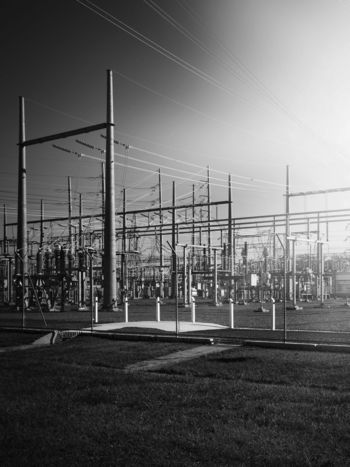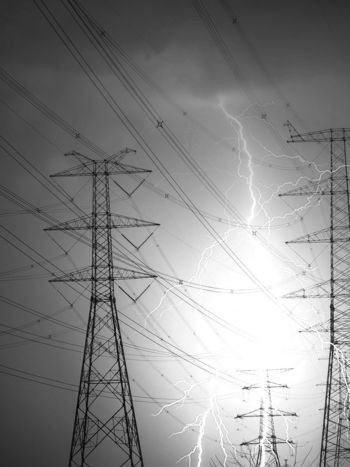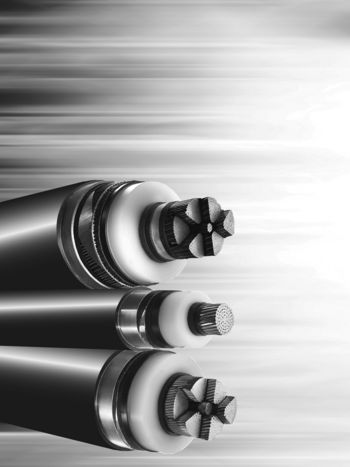Operator training in electricity grids at different control levels and for different participants, actors in the new environment
Changes that were already taking place in the reality of electrical systems within the scope of the Energy Transition and in their operation made inevitable changes in the training and behaviour of real time teams working in control rooms around the world.
The ongoing technological changes required new tools and new skills for the teams, the latter of which should be analyzed both in terms of content, application formats and resources used. As the conversations deepened, it was also verified that the proposed solutions for the new challenges would require reassessments and modifications in the teams' training.
Members
Convenor
(BR)
J. DARRIBA MACÊDO
E. HUBER (CL), N. CUKALEVSKI (RS), R. GORDON (AU), J. KREIENKAMP (DE), T. HINES (US), A. KELLY (IE), P. DENIS (FR), A. BARROSO (SP), K. JEFFREY (NL), M. MARKOVIC (AT), A. PRASAD DAS (IN), R. ZACHEO (IT), S. REHMAN (IN), S. ORLANDI (IT), D. KEARNEY (IE), D. LAVIS (AU), L. LACKOVIĆ (HR), G. MIGCHELS (NL), M.A. DE BEIR (FR)
This is how the group's work began, focusing on some key aspects that were gaining ground, such as the new reality of the need for joint training for different teams at different levels of the operation's hierarchy, from different entities including different countries; the evolution needs of the training tools and the ability to analyse these results to be developed by the operators and the own understanding of the new technologies inserted in the system and the challenges they impose on the operation and control.
We conclude that began to direct all work: at the centre of everything was the tool still considered the most suitable for training actions for teams, both for their training and for their technological updating - the Electric Power Systems Simulator - or as it is technically known the OTS - Operation Training Simulator or DTS - Dispatch Training Simulator.
First Steps - Levelling the Existing Situation and First Conclusions
A survey was carried out among the participants of the group to know the state of the art of the training processes used and the main characteristics of the OTS existing in the Companies represented there.
The analysis of the state of the art led to the conclusion about very similar situations in companies, starting with the use of the simulator itself as a central training tool. This was confirmed in all sixteen TSO - Transmission System Operator - surveyed, except for one of them, which was already in the implementation phase of its simulator for training.
We found similarities, almost unanimously, in the following aspects:
- Use of e-learning.
- Need for intercompany training of different types (TSO-TSO, TSO-DSO, TSO-DSO-PP, ...) with some difficulties from the simulators technology.
- Use of dynamic type simulators that provide power system response for quasi-stationary and long-term dynamic.
- Similarity of the generic architecture of the different OTS.
- A lot of difficulties exist about modelling within OTS of new resources with advanced technologies available in the new electrical system. Some of them has advanced modelling capabilities to include HVDC, FACTS devices and wind/PV generators.
- Simulators trainees consoles is the same as it is on his/her real-time SCADA/EMS system;
- OTS/DTS are integrated with SCADA/EMS system.
- All OTS/DTS used are software vendor specific.
- Use a simulator for operator certification/licensing.
- Need for frequent updating of simulator capabilities.
In the same way, the research brought information about the training processes used, detailing aspects of how the tools are used, from the design of the process, the expected objectives with the application of the training, the action of the trainer and the application of evaluation of the results of the training with trainees.
The Working Group began to debate and was able to elaborate a first version on future needs for better use of training actions, in general, concluding the following list of needs:
- Much wider power system modelling capabilities, to include not just different FACTS, HVDC and storage devices (including EV loads), load DSM/DR capabilities, but also modern DG/RES sources together with their control and protection elements/systems.
- Increase the capability to represent different automatic and protection systems, including different system level integrity protection schemes, like SPS (SIPS).
- Increase the capability to integrate with new existing and emerging control room software tools like: DLR, Weather forecast, Lightning detection, Geo magnetic storms detection, DSA, Wind/PV generation forecast, etc.
- Develop easier interfacing with external systems, like WAMS, Scheduling, MMS, etc.
- Use larger and more flexible Data Base and management system to speed up and make OTS configuration and maintenance process more efficient.
- Finally, new OTS architecture and corresponding implementation environment must enable much easier conversion and integration of different vendor specific CCM’s used by different training participants (from different ISO/TSO, DSO’s, GENCO’s, Gen. Aggregators and Reliability/Security Coordinators).
For the continuation of the work, it was clear to the Working Group that some specific topics should be addressed in order to obtain the state of the art of the training processes on each of these topics and the use of OTS/DTS in these processes, already indicating the ongoing and necessary evolutions for this central tool.
With that, the nine topics chosen and addressed in the sequence were:
- Main issues on Operator Training in the New and Complex Environment
- Renewables resources
- Power system restoration with Distributed Energy Resources – DER
- High Voltage Direct Current – HVDC links
- Dynamic Operator Training Simulator – OTS
- Phasor Measurement Units - PMU training
- Special Protection Schemes – SPS
- Trainer for operators
- Training evaluation
In summary, the results are presented below:
Chapter 3 - Main issues on Operator Training in the New and Complex Environment
In this chapter, the answers to a set of questions that tried to approach several subjects directly linked to general visions of the Energy Transition were evaluated.
- Storage (Batteries and Pump storage hydro plants - PSH) is already an item considered important in the training of most companies (with greater emphasis on PSH), but not yet directly inserted in the models of the simulators.
- Electric Cars are not considered as part of the training nor incorporated into the models of the simulators in the great majority of the companies.
- 50% members responded that their DTS/OTS accommodates active demand response (DR) of various kinds and the same is reflected in the power system model (PSM). The rest include the theme in their training manually.
- Already considered essential by 75% of respondents, training on the TSO-DSO relationship is beginning to gain ground in processes and tools. The tools for interaction between TSO and DSO are still in the development phase in most cases and the future will include requiring training in the tools themselves for operators.
- Practically all the new topics related to what is seen in the evolution of electrical systems at Energy Transition justify the necessary evolution in intra and inter companies training in the operation. This fact has been amply proven in research.
- About two-thirds of respondents consider that their OTS can include other tools (like intraday cross-border market applications, tools for load-frequency control, tools for operational security analysis) that dispatchers use in real-time intraday operations. We can conclude that the need for inclusion of intraday cross-border market applications/tools in the OTS exists, but the tools are currently typically not supported and will be.
Chapter 4 - Renewables resources
Main findings and conclusions:
- System operator use in training program actions with Renewable Energy Sources (RES). Normally, the Wind Power Plant in OTS, are modelled as hydro power plants. There is the problem to represent the RES production in distributed generation.
- The principal use in training is about: Reverse power flow direction implications; high production of RES and high variability; deviation from forecast; automatic frequency protection on RES; shut down wind production by reaching cut off speed.
- Normally the (OTS/DTS) is not used for training operators in handling system services provided by Renewable Energy Sources (RES).
- We should proceed to develop the implementation of a common RES model that can then be implemented in any proprietary simulator.
- We must set guidelines for the use of RES in the fields highlighted, mainly Restoration and Voltage control.
Chapter 5 - Restoration with Distributed Energy Resources – DER
Main findings and conclusions:
- Most TSO companies train for restoration annually.
- Almost all include external participants (DSO, Conventional Generation, DSU/AGUs, DER and Significant Customers?) in restorations simulation trainings.
- Training of new technologies (Batteries, Renewable energy including Solar Farms and wind farms; Synchronous condensers and HVDC) differs between TSOs with some companies integrating them into their simulator before they go live while other companies use courses and presentations from experts to train.
- Traditional simulator training for restoration is undertaken regularly in most TSOs using conventional generation.
- Simulator training for restoration needs to evolve with renewables and will become increasingly complicated.
- The challenges ahead lie in both the creation of tools and the introduction of automation or artificial intelligence to manage DER in the control room.
Chapter 6 - High Voltage Direct Current – HVDC links
Main findings and conclusions:
- In the research, group insight in the inclusion of HVDC in power system simulators is limited mostly due to many participants in the group not having HVDC systems in their territory.
- Simulators should include the operation of single and multiple HVDC links and how they impact each other as well as the equipment models and control systems needed for HVDC operation.
- Training of system operators should also include identifying and remediating AC system impacts on HVDC equipment.
- Where companies have HVDC in their simulators, the HVDC scenarios covered are very basic and do not include emergency scenarios such as power system restoration. It is important to evolve in these scenarios.
Chapter 7 - Dynamic Operator Training Simulator – OTS
Main findings and conclusions:
- The implementation of dynamic studies in simulated training tools are already very widespread and are already an established reality..
- More advanced stages of sophistication, with the implementation of simulators that consider faster time responses in their processing (phenomena between 0.1 and 10 sec.) still appear in few cases.
- We found that a significant number of cases in which such development are already considered and that, in most cases, these situations are already represented in the prepared scenarios.
Chapter 8 - Phasor Measurement Units - PMU training
Main findings and conclusions:
- 9 out of ten researched Companies use PMU information inside their Control Rooms, but the present level of operator training on use of PMU data seems to be still inadequate.
- Coordination during real-time operator training in PMU/WAMS is still largely internal to the company, not including TSO-DSO relationships or regional operation centres.
- The next generation of training simulators could be suitably upgraded for giving training on dynamic/transient (sub-second) phenomena using PMU data.
- The possibility of integrating of new PMU applications into the simulation environment can be explored for providing training on oscillation detection and mitigation, system restart, and remote synchronization of islands etc.
Chapter 9 - Special Protection Schemes – SPS
Main findings and conclusions:
- Most survey respondents indicated that they have SPS in system, that they are growing in prevalence and that they are being modelled in some way in the EMS and simulator.
- With renewables increasing, it is likely that further training will be required on SPS sequencing, operation and trouble shooting. With available technology this should be facilitated in the simulator with automatic actions responding to operator actions.
Chapter 10 - Trainer for operators
Main findings and conclusions:
- Trainers are for operating training essential; their main task is to lead the group and ensure that training shows conditions as close to reality as possible.
- The results from the research shown that especially the communication skills and the technical knowledge of a trainer should be on a high level.
Chapter 11 - Training evaluation
Main findings and conclusions:
- The evaluation of the training event seems not to have been effectively achieved by the new scenarios in the electricity sector.
- Some forms of evaluation need to undergo minor adaptations due to the new training modality that incorporate new simulation technologies and the way of applying the exercises.
- In the general view, the fact that the new trainings can cover different levels of control and different profiles of participants in the new environment of the electricity sector still does not bring deep or significant alteration in the objectives and evaluation processes.





